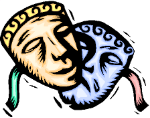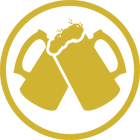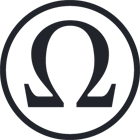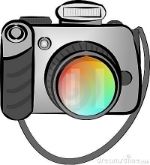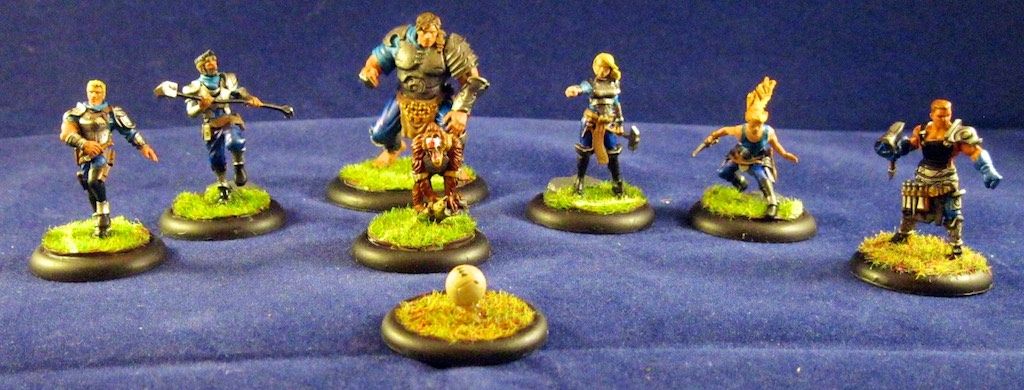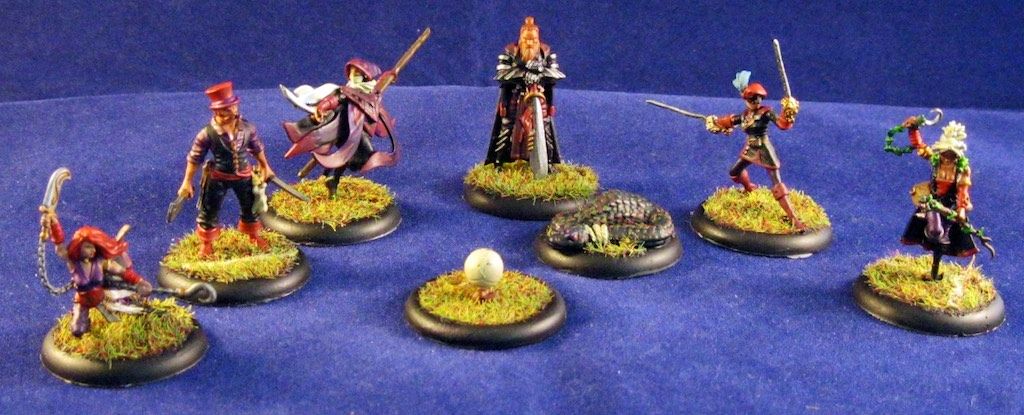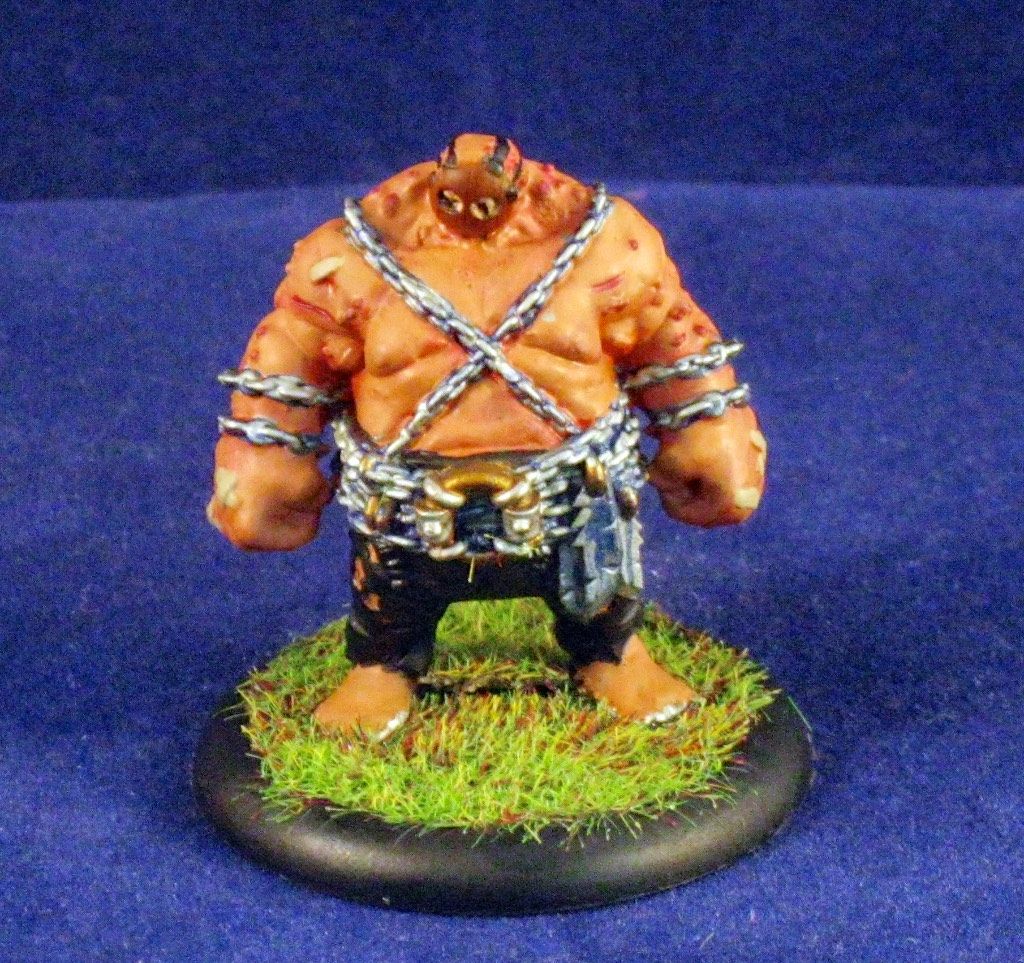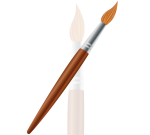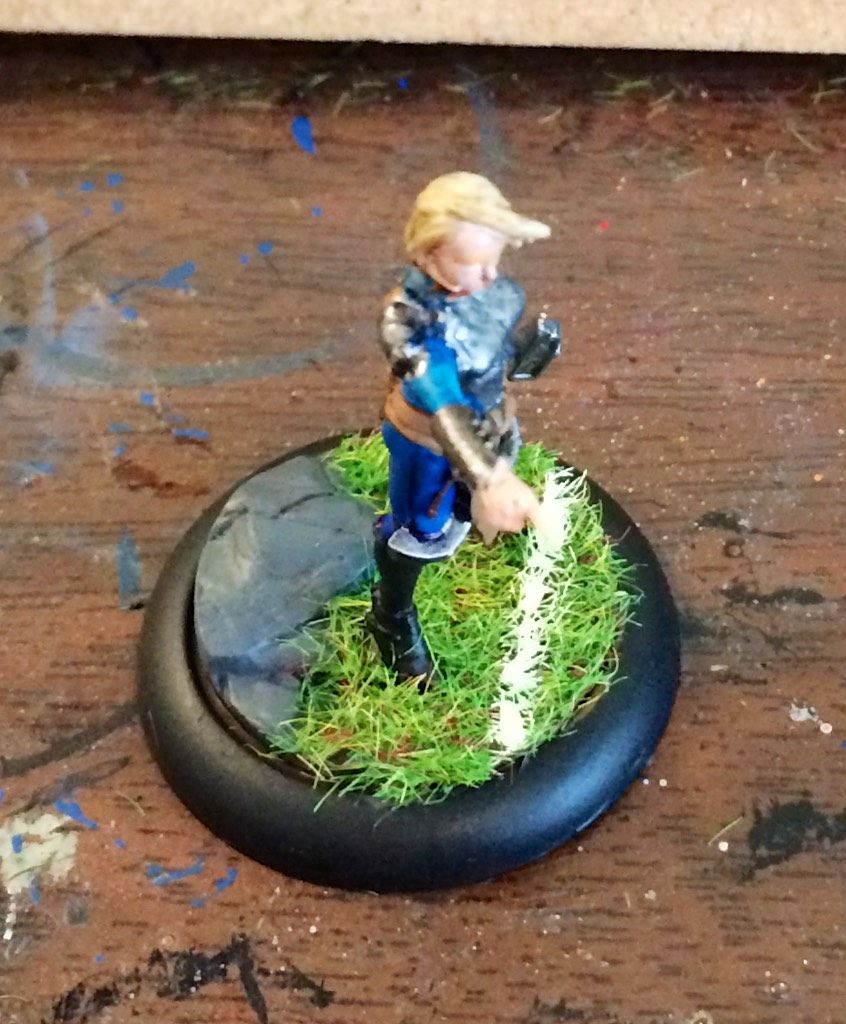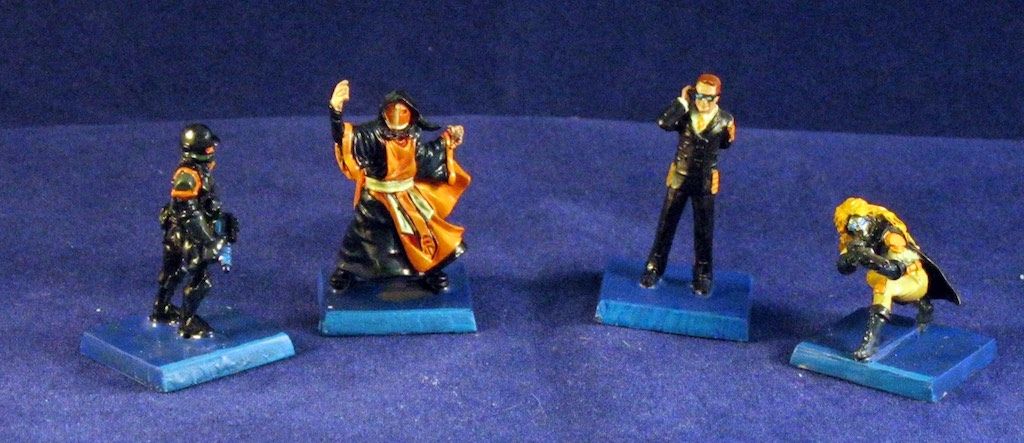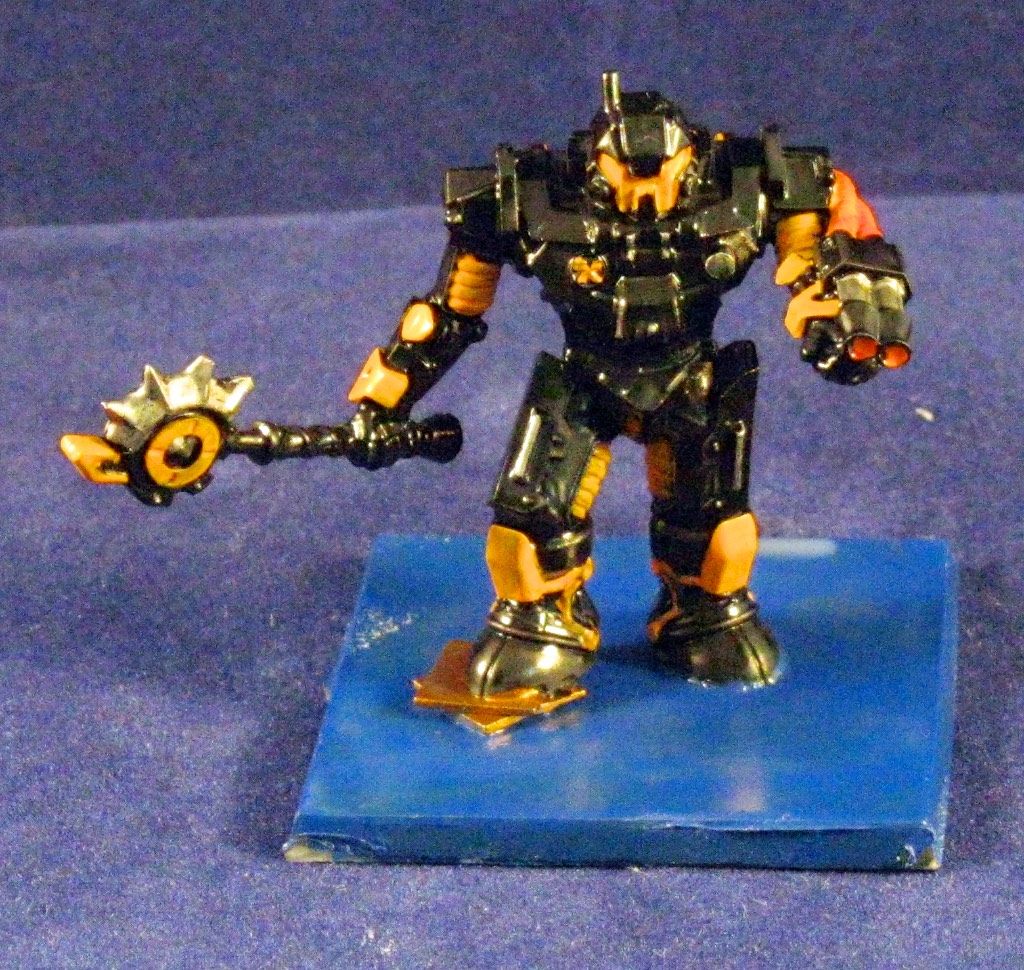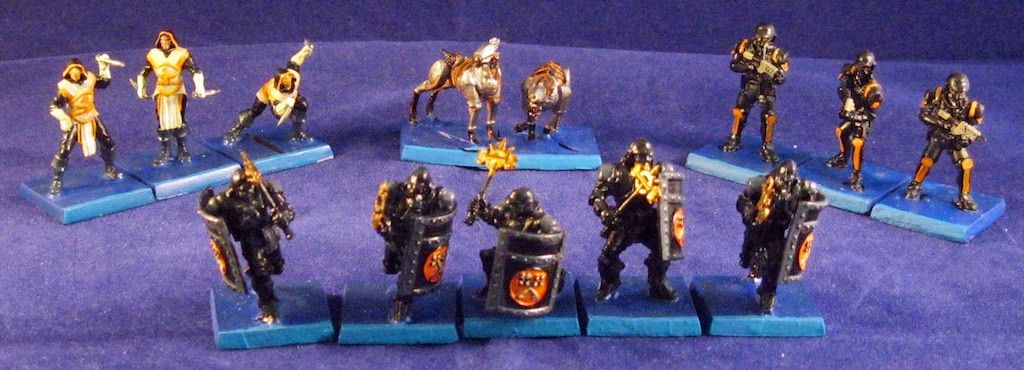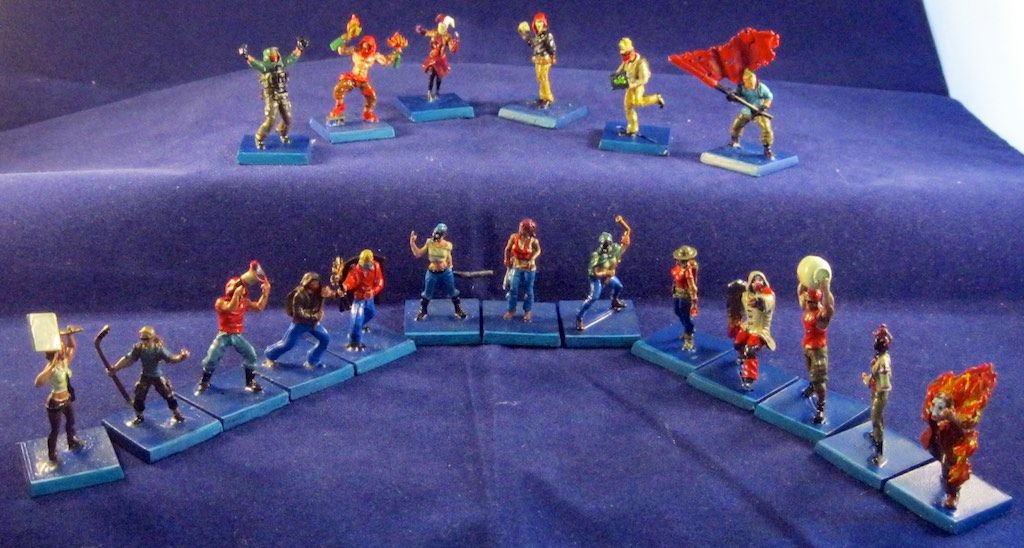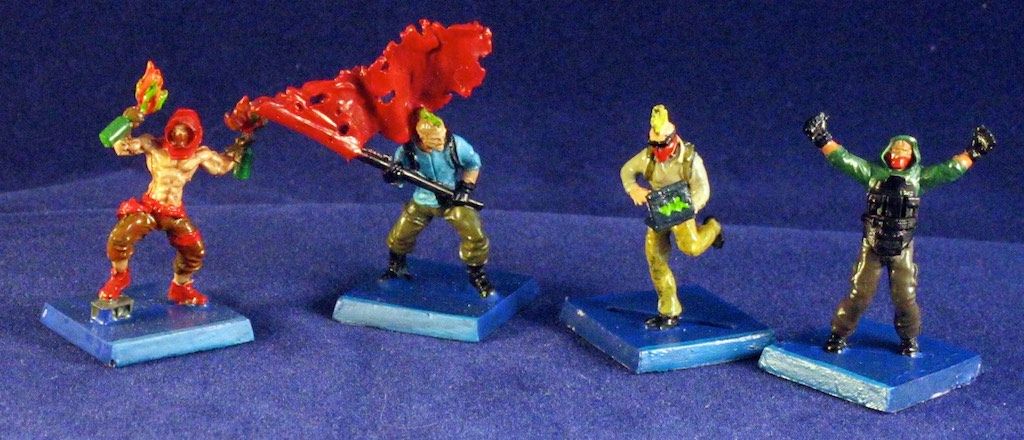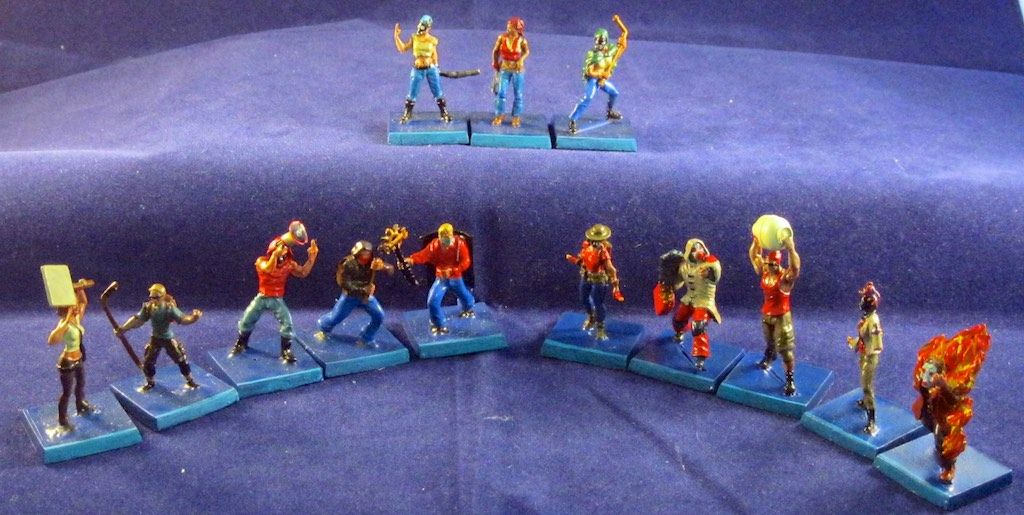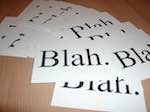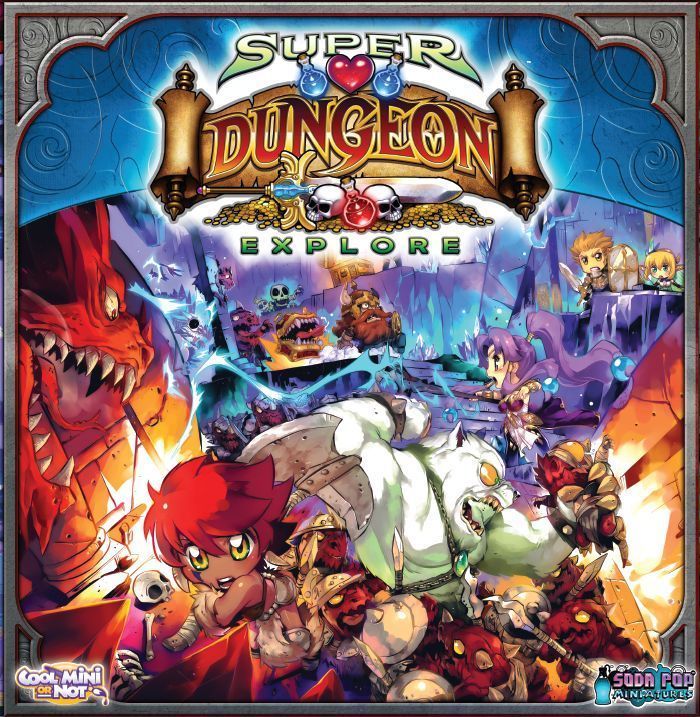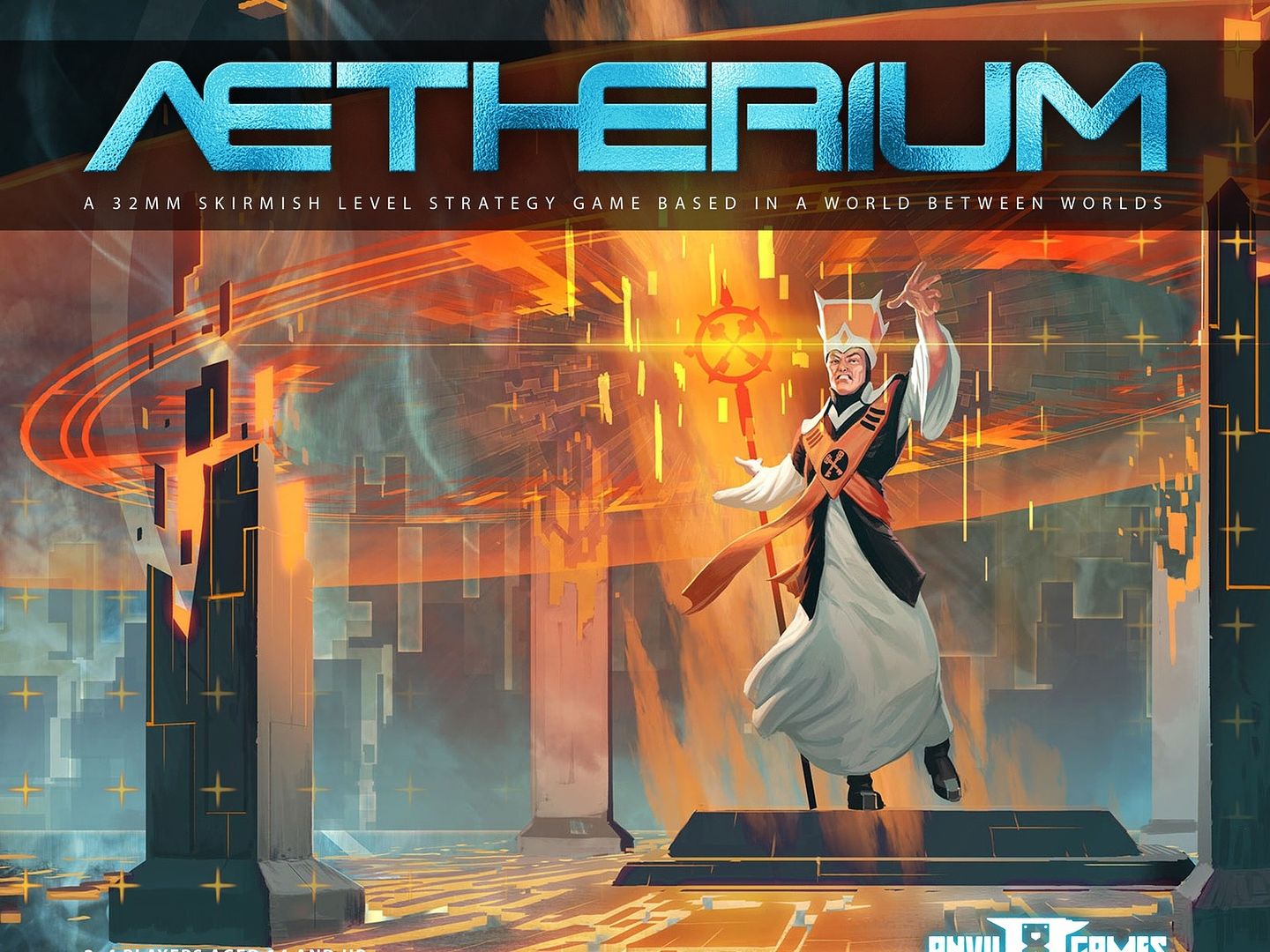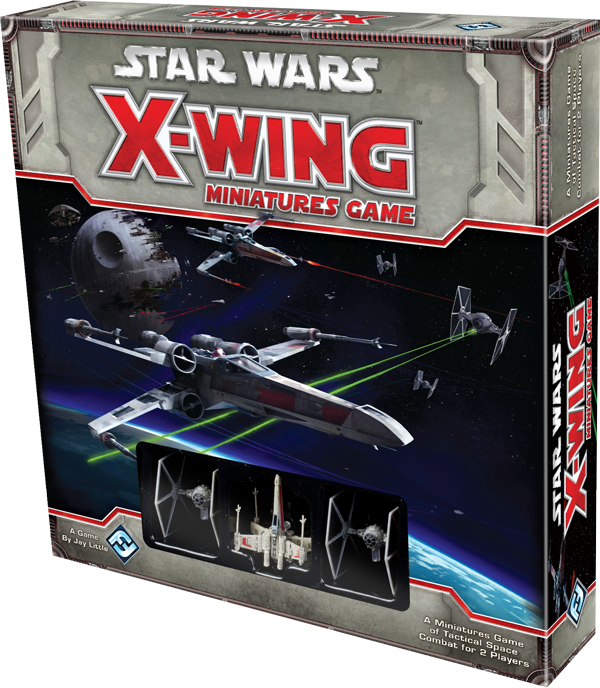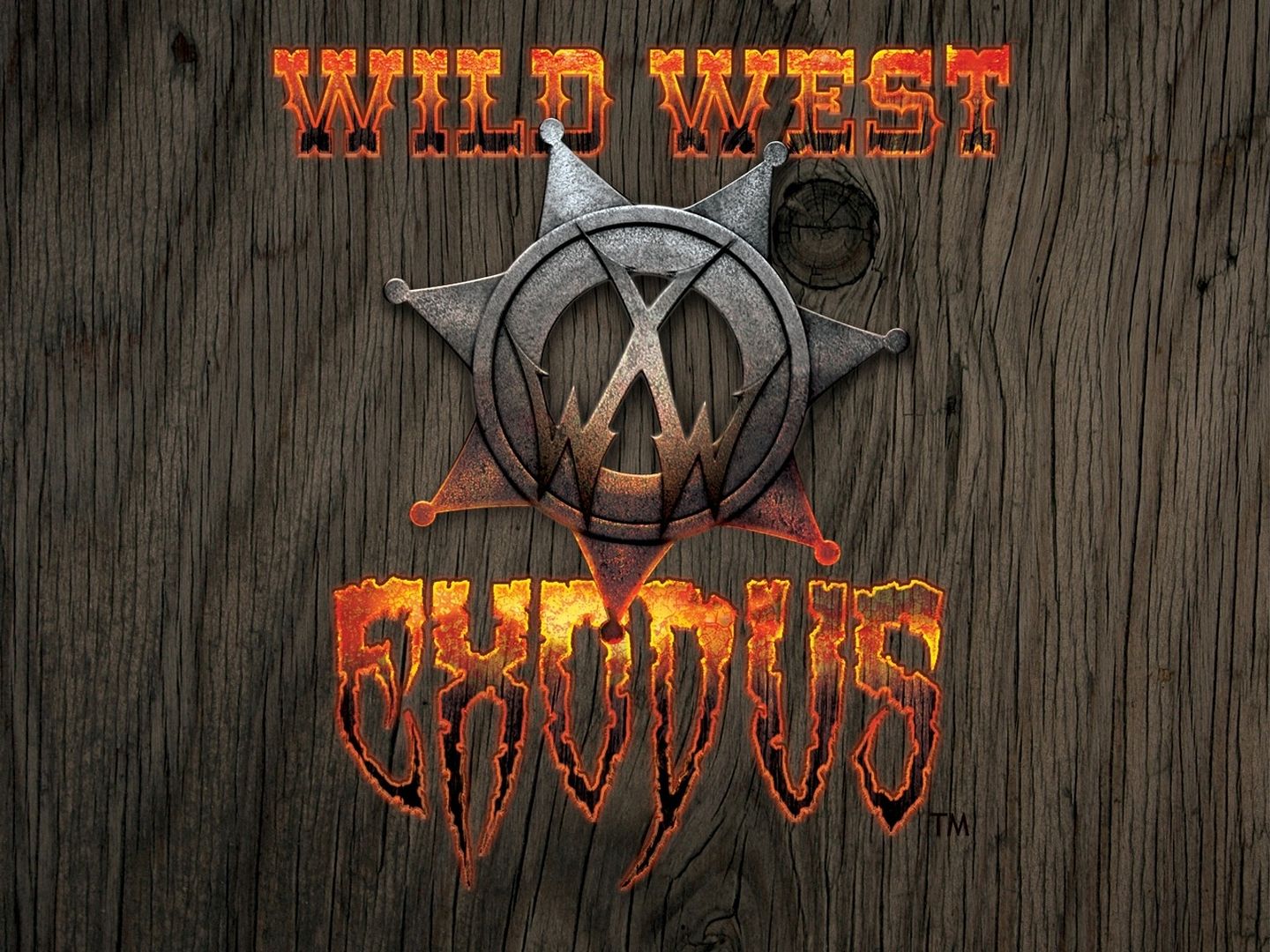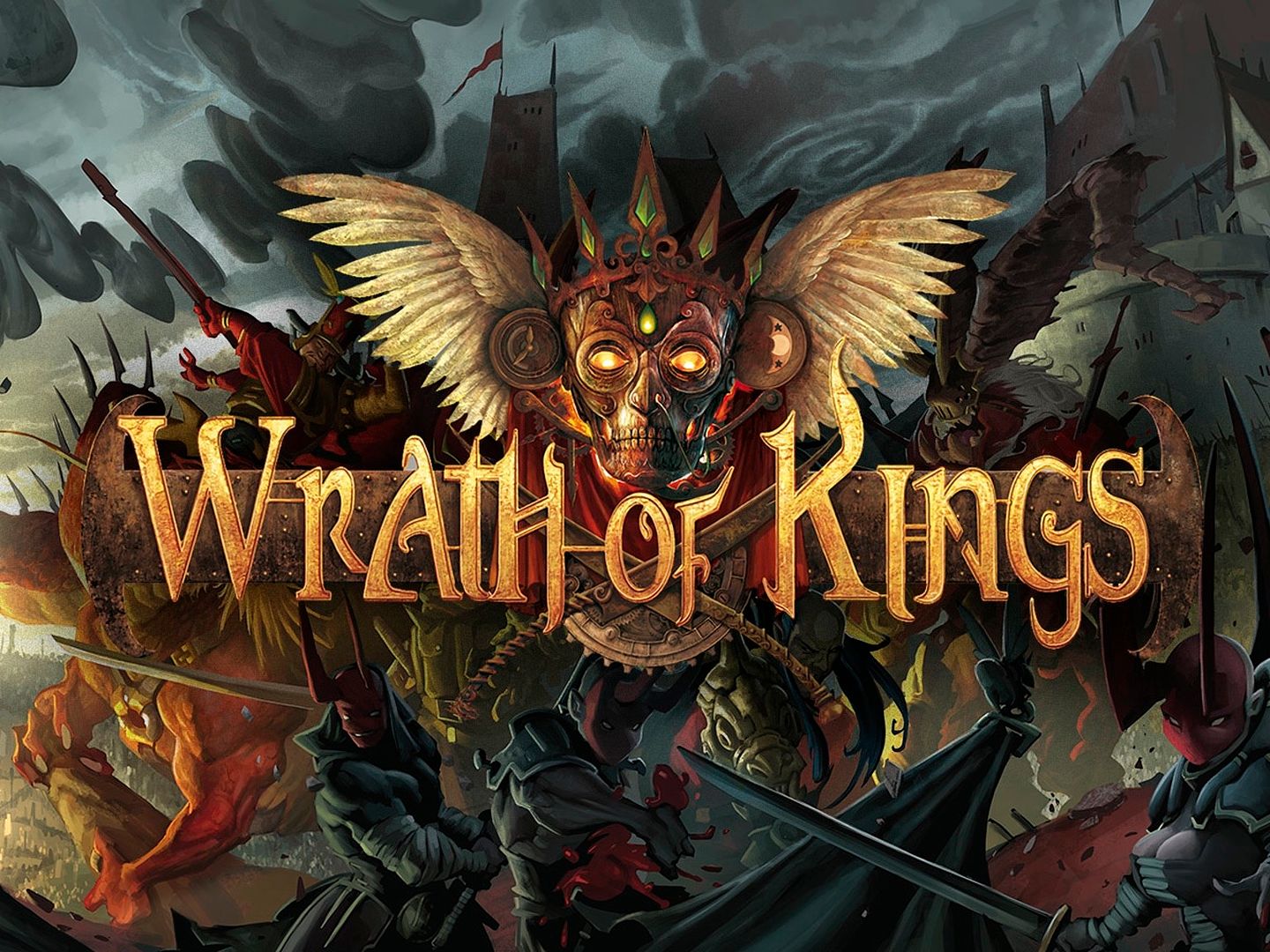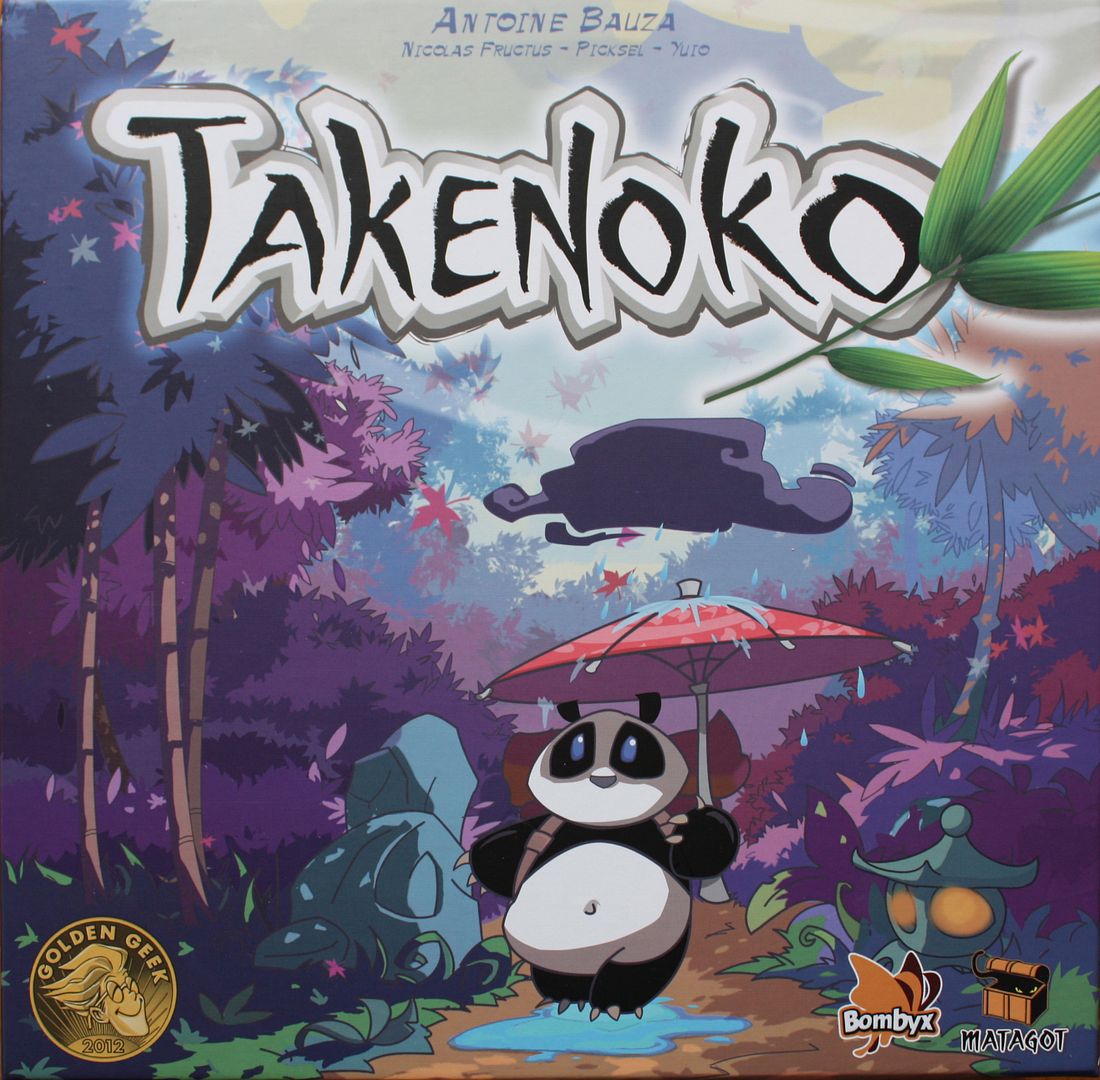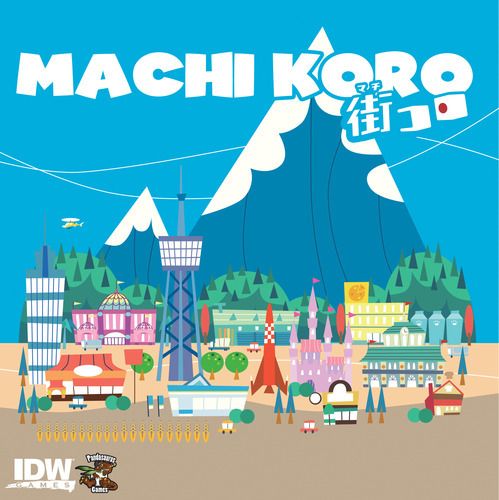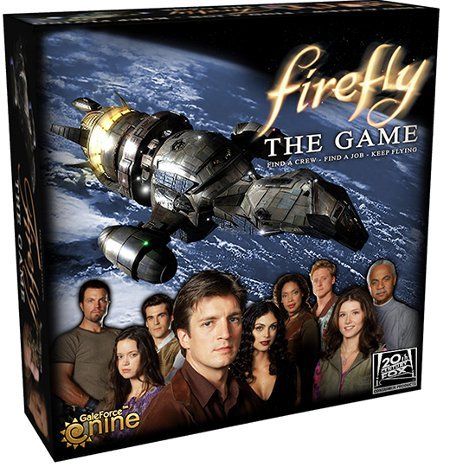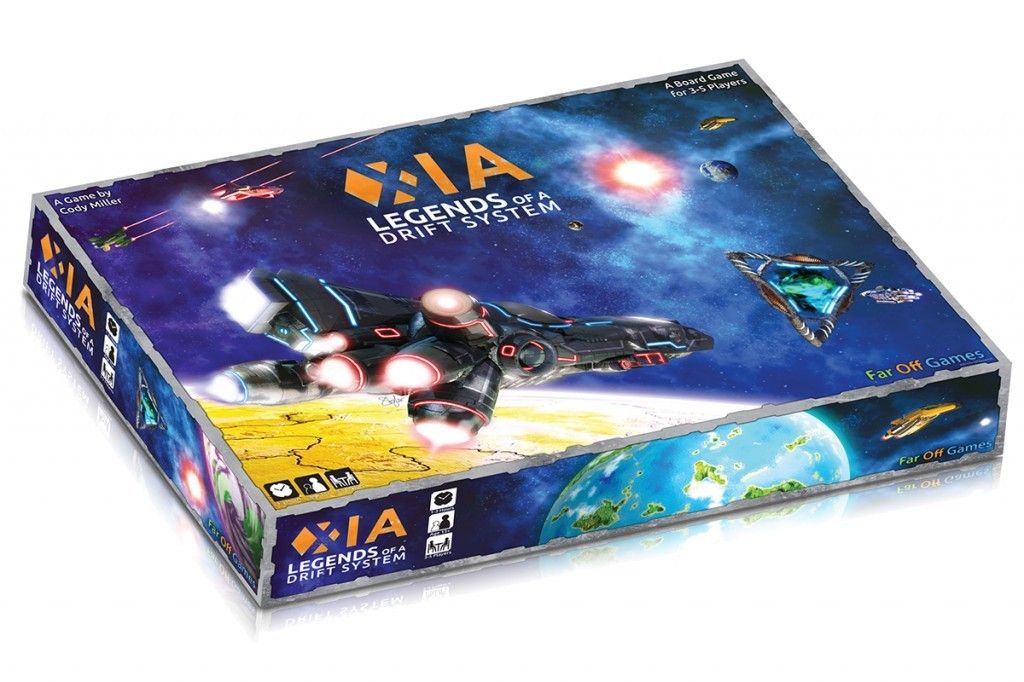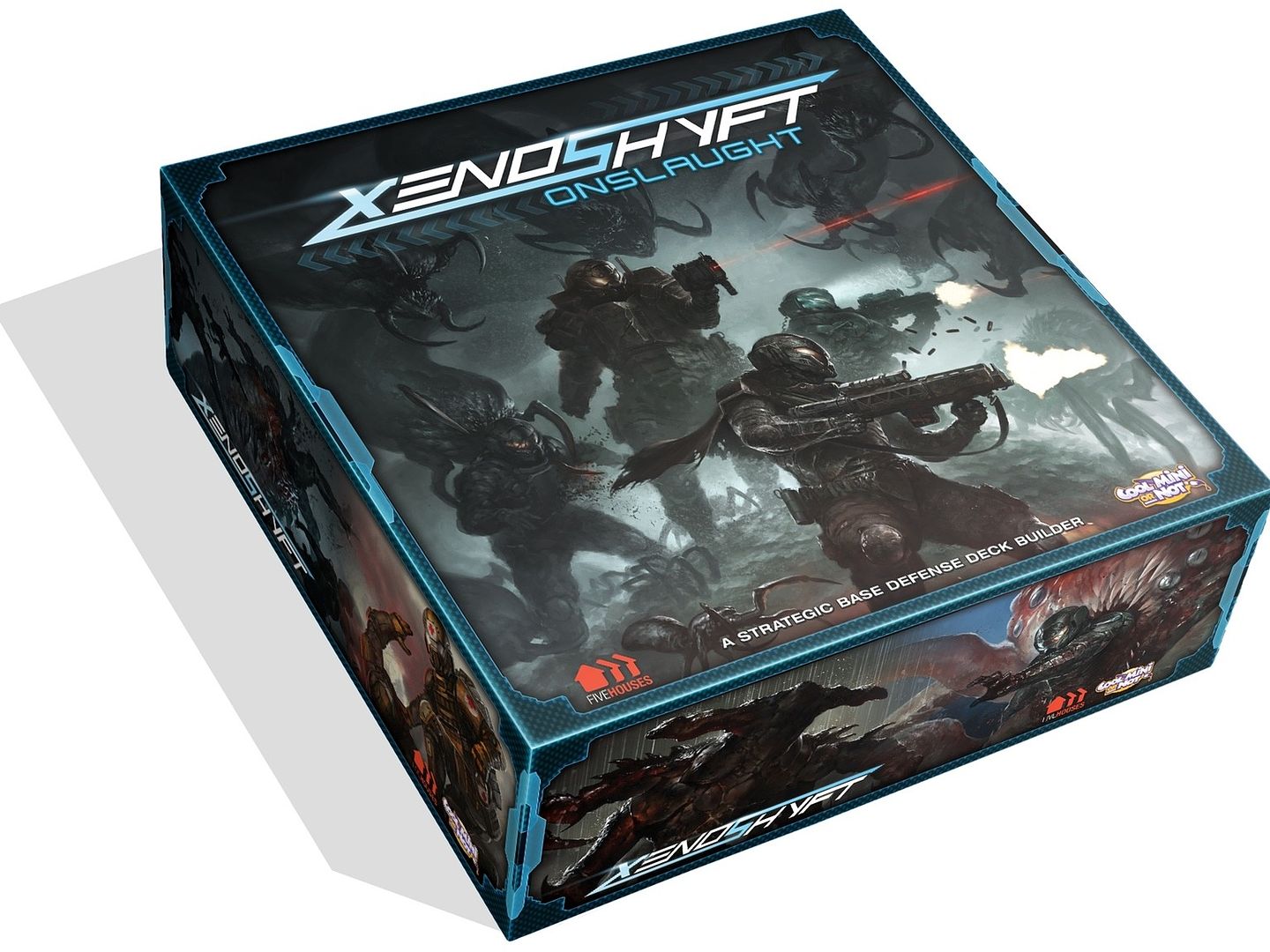What is Guild Ball?
Guild Ball is a small scale, skirmish style, table top miniatures game based on medieval mob football. For any who have not read the wikipedia article on medieval mob football, it's well worth the read! Go read it, then come back and finish this blog post. Guild Ball players field a team of 6 players onto a 3'x3' "pitch", with the pitch allowing for as little to as much terrain as the players prefer. There is a ball, a kick-off, and actions in the game such as "tackles" (European tackles where a player takes the ball, not American tackles where the opponent is clobbered) and "shots" that directly relate to a football (soccer) game. There are also damaging attacks, knockdowns, pushes and dodges, and more esoteric (Noxious Blast) abilities that relate directly to a combat oriented miniatures war game. Players proceed through alternating model activations to accumulate victory points both by scoring goals and taking out opposing players in order to win the game.
Guild Ball players field a team of 6 players onto a 3'x3' "pitch", with the pitch allowing for as little to as much terrain as the players prefer. There is a ball, a kick-off, and actions in the game such as "tackles" (European tackles where a player takes the ball, not American tackles where the opponent is clobbered) and "shots" that directly relate to a football (soccer) game. There are also damaging attacks, knockdowns, pushes and dodges, and more esoteric (Noxious Blast) abilities that relate directly to a combat oriented miniatures war game. Players proceed through alternating model activations to accumulate victory points both by scoring goals and taking out opposing players in order to win the game.- Game: Guild Ball
- Company: Steamforged Games
- Website: http://guildball.com/
- Players: 2
- Play time: typically 60 - 90 minutes
Who are the teams?
Guild Ball launched it's first season with eight teams immediately available. This is a fairly impressive feat for a new company, especially considering that most of the teams consisted of 7 different players. This allowed for a game launch that included 58 models. Guild Ball is already preparing for season two where they will release a ninth team (the Hunters Guild) and additional models for each of the existing 8 guilds. Here's a quick overview of the current (Season 1) guilds in the game:Alchemists
The Alchemists are the one of most "magical" of the teams in the game. They focus on creating effects to both buff their own team and debuff the enemy models. They also have the most abilities (and gain the most benefits from) creating cloud effects that stay on the board or blast effects which can impact multiple targets. Alchemists have the abilities to score victory points by taking out opposing models but they are stronger at scoring goals as a path to victory. Alchemists have 6 team models to choose from and 5 Union models that will play for the team.Brewers
The Brewers are a team I expect will be fairly popular among Guild Ball players, simply due to the overall aesthetic of their models. The Brewers models bring a Scottish Drunkard look with them, with most of the models wearing some type of kilt and carrying, handling, or throwing some type of keg or bottle. Their play style relies fairly heavily on knocking down the opposing models then pushing them around or doing extra damage to them. Although their primary path to victory tends to encourage beating up and taking out the opponent, they do have one of the best strikers (models who are good at scoring goals) in the game. Brewers launched with 7 team players plus 5 Union players who will play for the team.Butchers
The Butchers are one of the "Poster" teams for Guild Ball, being one of the first two teams that were intended to launch the game, along with one of the teams included in the quick start rules, and one of the teams that's recommended to demo the game with. Butchers have a very direct play style that focuses on doing damage to the opponent and taking out their models. Although Butchers have a very good striker on their team, she acts as more of a "gotcha" model than an actual striker due to the fact she does not get much support from the rest of the team. Overall the Butchers are the most efficient killers in the game, able to quickly close on the opponent players and deal a lot of damage to their targets. The Butchers launched with 7 team players and 5 Union players who will play for the team.Engineers
The Engineers are a team which was created as a "character builder" team during the kickstarter (as I understand). This means that the initial models on the team were all created in response and with some input from a kickstarter backer who backed the project at a very high level of support. The Engineers are very "medieval robotic" with a wooden automaton, a wooden robot mascot, and a complete mechanical spider cyborg on the team. In a typical steampunk or futuristic game these models would all look great but be somewhat "normal" looking in context. Guild Ball caters to its time period style by changing all the robotic portions from metal to wood, providing a very unique and rustic look to the models. The Engineers have the bulk of the ranged abilities in the game, providing a unique play style among the teams. They use that range to both deal damage to opponents and knock down players on the field. The heavy use of "character plays" approaches the game differently from other teams, providing an interesting challenge to the other guild ball teams. The Engineers launched with 6 team players and 4 Union players who will play for the team.Fishermen
The Fishermen are the other "poster" team for Guild Ball, most often being depicted as facing off with the Butchers. They also have a very direct play style, arguably the most efficient scoring team in the game. The Fishermen focus on movement and scoring goals, with a highly reduced ability to damage and take out opposing players. This creates an interesting learning curve for new players, as often the Fishermen are "attacking" opposing models in order to gain more movement (dodging and pushing the opponent around) instead of to do damage. Once a player wraps their thoughts around the "attack to move" process, the Fishermen really come into their own. The Fishermen have some of the best scoring players in the game, including both their striker and the entire mid-field of the team having very good abilities that contribute to scoring. The Fishermen launched with 7 team players and 5 Union players who will play for the team.Masons
The Masons are the team I picked to start playing with. I chose them for the very simple reason that they looked to be the easiest to paint to a table top standard of all the teams. The Masons are a team which has a fairly direct play style, not directly focusing on one specialty but being able to combine different plays to meet either of the two primary scoring methods. This means that Masons can use their abilities directed one way to become a threatening scoring team when that play style best suits them. They can quickly shift to another set of abilities to become a damage dealing team able to take out opposing models with a fair efficiency to gain victory points that way. In both cases they will not be the "best" or most efficient team to play to these styles but what they give up in efficiency they gain in flexibility, being able to switch play styles mid-game. The Masons epitomize "the whole is greater than the sum of the parts". Masons launched with 7 team players and 5 Union players who will play for the team.Morticians
Morticians are accepted to be the most complicated teams in the game to play. Morticians are have abilities that are focused on manipulating, controlling, and generally messing with the opponent via their abilities. While there is nothing to stop the Mortician players who taking out opponents or scoring goals, their focus is different from both of those. Morticians have abilities that allow them to control the opposing players, move opposing players around the field, increase the cost of opposing playing abilities, and potentially remove an opposing player from the game completely. I have not yet painted up my Morticians, although it is a team which I got from the kickstarter. I've liked the "sneaky" and "control style" forces in other games so I am expecting to really enjoy the Morticians once I paint them up and start playing them. Morticians launched with 7 players and 5 Union players who will play for the team.Union
The Union is unique among the Guild Ball teams in a number of ways. They received the most models at launch, are truly a collection of individuals, and have players who will play for other teams. Union players fill in the "mercenary" component that many modern skirmish games utilize to provide additional options to their primary forces in their games. Along with fleshing out options for the other teams, the Union can field its own team with captain and mascot which is equally competitive and balanced to the other teams. Overall the union can play to both a damage dealing and a goal scoring play style, achieving victory both ways. The Union differs from other teams as they do this by fielding specialized players who do not necessarily benefit from the other team players in the same way other teams work together. Union is similar to Masons in being able to switch play styles mid-game, but they achieve this in a very different way than the Masons do. Union launched with 11 team players.How's it play?
Guild Ball plays primarily like a skirmish game, with the primary objective of the game to move a ball token to the opposite side of the field and put it on a goal marker. There is plenty of combat available within the game, providing satisfaction to any "war gaming" player who likes skirmish games. The use of specific "character plays" and the individual "character traits" on the models provide a level of complexity that will appeal to Malifaux and Warmachine/Hordes players.Although Guild Ball has removed itself from the typical "sports ball game" grid in favor of the open table of a skirmish game, it still delivers a strong "sports ball game" flavor. Actions such as Tackle (taking the ball from an opponent), Knockdown (knocking opponents prone), pushes and dodges (moving the active model or the target model), kicking (passing the ball to another model or the open field) and the goal shot (kicking the ball into the goal) really bring out a strong sports feel for the game. The greater emphasis on goals providing more victory points than taking out an opposing model also encourage a "sports game" approach to the game. The combination of this focus and the ability to return "taken out" players to the game in later turns removes the killing aspect that's typically a primary focus for tabletop miniature games.
Guild Ball establishes itself as a modern skirmish game through the use of an action point system that enabled each team a limited resource to perform actions. Guild Ball adds another limited resource called momentum which can be earned through the turn and provides additional benefits to the models.
What's innovative or different?
Guild Ball differentiates itself from other tabletop miniature skirmish and sports games in a couple ways. The Guild Ball creators have spent a fair bit of time trying to explain why their dice pool system is different, but the real difference is how the dice pool is used with the Playbook each character model has. The playbook provides a number of optional actions a model can perform based on the number of successes that model generates during an attack. These options range from damage, to moving the model or opposing model, to taking the ball, to performing a specific special action individual to that character. Layered into the playbook are select actions which provide an additional resource called momentum, a critical resource in the game. This layering of momentum onto only specific actions creates key decision points for the player and encourages thematic play styles for each team without forcing a player to play their team in a specific.The Guild Ball creators have gone to great lengths in the design of the game to adhere to a philosophy of choice in the game. This means there is not really any aspect where a model cannot do something, they typically can perform an action but are not optimal at doing it or the action is not as efficient. They have done a great job of creating a game where "everything is permissible, but everything is not always a good choice". Although I enjoy playing control style forces in skirmish game, this concept of not having a "hard stop" or "hard counter" to actions is very enjoyable and they have accomplished their goal so far.
The combination of focusing on characters for each player and using medieval guilds as the background forces opens up a lot of future design space for the game. All the models in the game represent specific personalities in the players, each model being a singular character in the game. This means there are no generic "troopers" on the field, each player gets their own specific abilities, traits, and play style. The backdrop of Guilds allows for a wide canvas of choices to add new teams to the game while also providing a fairly deep pool of choices for the players that can be added within each guild. Guild Ball took an additional step around this design space by not including point costs for players in the game. Each team is fielded with 1 Captain, 1 Mascot, and 4 other players. This means that all players need to be balanced against each other while providing different styles of play. To date the developers have performed superbly in not creating a conflict where one player is clearly a better choice or an upgrade to another, forcing players to choose abilities and play styles on a character by character basis. When choosing a specific player for a team you often need to weigh what abilities that player brings to the field against what abilities your losing by not bringing an alternate player on the team.
Overall quality of the game
Evaluating the overall quality of the game takes on two views when looking at a tabletop miniature game. There is the quality of the rules and game play, then the quality of the miniatures themselves. The miniatures for this game are simply beautiful. I felt that the original metal models that Wyrd produced were some of the best models in my experience. The Guild Ball models equal and in many cases surpass the quality of those original metal models from Wyrd. The models look fantastic and assemble and prime nicely. Painting these models goes to a different level which bears specific comment. The Guild Ball creators come from a modeling and painting background and their experience comes through strongly with how these models look when painted. The creators have worked with the digital sculptors to provide a combination of different textures, layers, and flow to the models that achieves a result I have not seen in other miniatures. The Guild Ball models consistently look good with both a fairly amateur "table top" quality paint job (consisting of base, wash, highlight, dry-brush) and a professional quality paint job utilizing multiple layers and high level techniques. These are the first model I've seen achieve this effect, and they deliver on it incredibly well.
The miniatures for this game are simply beautiful. I felt that the original metal models that Wyrd produced were some of the best models in my experience. The Guild Ball models equal and in many cases surpass the quality of those original metal models from Wyrd. The models look fantastic and assemble and prime nicely. Painting these models goes to a different level which bears specific comment. The Guild Ball creators come from a modeling and painting background and their experience comes through strongly with how these models look when painted. The creators have worked with the digital sculptors to provide a combination of different textures, layers, and flow to the models that achieves a result I have not seen in other miniatures. The Guild Ball models consistently look good with both a fairly amateur "table top" quality paint job (consisting of base, wash, highlight, dry-brush) and a professional quality paint job utilizing multiple layers and high level techniques. These are the first model I've seen achieve this effect, and they deliver on it incredibly well.The game itself is fantastic. It is very well put together from a rules standpoint and only has some small factors that indicate it's from a first time game developer. There are only a couple of specific rules I find to be "gamey", by which I mean they are not naturally intuitive and as such may appear to be exploitative when used. Overall this is an excellent game with solid quality rules and excellent model and game balance.
Recommendation and thoughts
After reading this far it should be no surprise that I strongly recommend this game. I was originally adverse due to the "sports ball" nature of the game, and I have subsequently found that not to be an issue. The complexity of the abilities combined with the 6 model skirmish nature of the game is really compelling for me. The game balance, distinct team play styles, and model look all make this a top game in my opinion. Concluding the kickstarter with 5 teams in my possession further demonstrates my recommendation for the game.I have really enjoyed playing Guild Ball and it is one of my primary games currently. I am always looking for new opponents and am excited to see the game grow in the US market. This has completely replaced the gap in my gaming created by Malifaux Second edition and I cannot recommend it enough.

